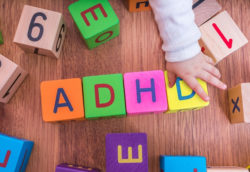When you hear about cognitive development, Jean Piaget’s theory of cognitive development comes into the picture that suggests that children move through different stages of mental development. Piaget concluded that there are total of 4 cognitive development stages in children.
Jean Piaget was the first to ever study scientifically about early childhood cognitive development which helped in generating the most influential theory to understand it thoroughly. He did mention that children from all the cultures do go through the series of four stages in a prearranged order. However, the only difference in each stage is the quantity of information obtained along with the quality of knowledge and concept developed within the child differs.
What is Cognitive Development?
The definition of Cognitive Development with respect to Piaget’s theory is as below:
As per Piaget’s theory on stages of cognitive development, the kids are not able to perform a few tasks or comprehend certain tasks and concepts until they arrive at a particular stage of cognitive growth. The child’s progression from one stage to another in the Piaget’s theory is achieved after widespread exposure to the appropriate stimuli and knowledge. The readiness to master the new skills called as physical and cognitive maturation is also necessary to help the progression of the kid towards succeeding the stages of Piaget’s theory. Piaget believed that without this experience, the child would be unable to obtain the optimum level of cognitive growth.
Basically, it is a blueprint that describes the stages of normal intellectual development in the Piaget stages – from newborns through adulthood. A comprehensive theory created in the year 1896-1980. Another name of this theory was Developmental Stage Theory. Historically, this theory of human intelligence and the development of the cognitive skill of children was studied in various ways. The oldest of all the theories was about IQ (Intelligence Quotient) the first adopted way to test in the United Stated by psychologists Lewis Terman in the year 1916 from a French model found in 1905.
The concept of IQ was based on the concept of “mental age” which leads to a scope to compare the intelligence of a gifted child to an older child. And a slow learner’s score is in the range of that of a younger child. IQ tests are commonly used in the United States, however, has its own controversies to deal with respect to the biased nature towards race and gender. While another theory by John Watson and B.F. Skinner contrasted the above theories saying the kids are completely malleable and they can learn which depends on the environmental factors helping the kid to shape the intelligence. The kid’s learning ability by having the kid rewarded for certain behavior and other discouraged.
Stages of Cognitive Development: We will define Cognitive Development Stages in the below paragraph.
1. STAGE # 1: Piaget’s Stage of Sensorimotor (0-2 years)

This is the stage, where the child tried to demonstrate his actions by attempting to learn about the world by watching, grasping, sucking and manipulating the objects. Their world is governed by actions only. The child learns by seeing and doing and mostly ruled by his sensation and actions.
From a newborn to a toddler to a kid, from the mercy of just reflexes which the mother understood to respond to random behavior and gradual increase in the complex cognitive and behavioral schemas, the changes are evident.
- 0-1 month: When the baby shows reflexes and understands the environment and his things are achieved through crying and sucking only.
- 1-5 months: The kid now has sensations combined and allows the kids to engage in pleasurable enjoyable actions deliberately such as putting their thumb in the mouth to suck.
- 4-8 months: The baby is now aware that their actions do influence the surrounding and hence purposely indulge in actions.
- 8-12 months: This is where the kids learn coordination of reactions and further explores its surrounding and imitates the behavior of others.
- 12-18 months: Where the child is ready to try our new behavior.
- 18-24 months: Where the thoughts are representational and the child begins to recognize faces and appreciate symbols that represent an object or an event. The kid is learning patterns now.
These stages form the base for the child’s capability to form mental representations of objects in later Piaget’s stages.
2. STAGE # 2: Piaget’s Stage of Preoperational (2- 7 years)

This stage has use of language which is the most significant development of this preoperational stage. A child can make use of the internal representational systems at this Piaget’s stage of cognitive development. These internal representational ways are used by the child to describe people and feelings about the environment. The symbolic play also develops at this stage letting the kid engage in pretend play making use of the objects available to represent as something else. This helps the kid in a way for instance, that he could use a spoon to represent airplane and wave it in the air.
The child is completely engrossed in egocentric thoughts according to the Piaget’s stage that makes him believe his views of the world is shared everywhere around him. The child does not understand the other ways or that there are some other methods to look at the world and interpret the information. The kid who plays hide and seek may close their eyes while standing to believe that since they cannot see anything, the other person as well can’t.
3. STAGE # 3: Piaget’s Stage of Concrete Operational Stage (7-12 years)

This stage is where the kid is growing his understanding of the principle of conversational signals and entering the Piaget’s concrete operational stage. Piaget’s stage 4 takes the child to think with logic while developing cognitive skills. The kid is still although constrained by his affinity to the physical realities with a concrete base. Therefore, he faces some troubles in understanding the questions and problems of the abstract or hypothetical imaginative nature.
With this, comes the mastering of conversation in the child as he acquired the greater proficiency at task that requires logical reasoning, distinguishing the fantasies from facts, deduction of induction, classification of objects and things, formulating a decision about cause and effect and spatial thoughts with knowledge of numbers During this stage of Piaget’s cognitive development, the kid begins to shed off some of the egocentric characteristics we spoke in the earlier stages
4. Stage # 4: Piaget’s Stage of Formal Operational Stage (12- adulthood)

The last stage of cognitive development, where the child’s thinking is no longer limited to the observational items and physical events. The kid is able to utilize the abstract, logical and formal thought process in order to be able to make sense of his environment as a whole. The child is able to approach the problem-solving skills and systematically does it by formulating hypotheses and methodically trying and testing them out. The Piaget’s theory, however, says not all individuals reach this stage of development or are capable of forming a thought process to be operational enough.
Piaget’s theory of cognitive development has been very influential and proven precious particularly in the child developmental field. This theory has led the direction in which educational curricula advances and designing the various strategies in teaching children for their betterment.








































